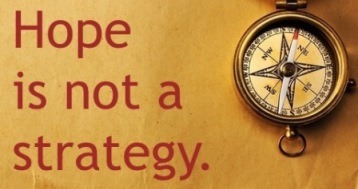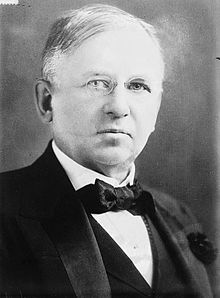One task topped the list of all my prio rities yesterday — I planned to write this blog post.
rities yesterday — I planned to write this blog post.
That didn’t happen. (I bet you’ve had days like this too!)
This is what yesterday looked like instead:
- A consulting client had an issue that needed immediate attention.
- My son needed me to drive him to a medical appointment (no worries, he’s fine now).
- I received a call from a conference planner who wanted to see if I would be a good fit for their keynote speaker.
So there went my day, and my blog didn’t get written, even though it was #1 on my priority list.
I used to feel stressed and guilty when things like this happened, but not anymore.
I’m a huge believer in planning and prioritizing. I preach and teach the value and necessity of strategic planning. I walk the talk about starting every week with a To-Do List that includes my Top Five Priorities, and my Top One of Five (meaning, no matter what fails, this One Thing must get accomplished).
Yet should I have said “No” to all three unexpected requests because I knew that this blog post was my #1 priority?
Of course not. And neither should you. Because in Real Life, some things are more important than others (no matter what we have written on our To-Do lists!).
Let’s get clear about priorities and lists
Your priorities are guidelines that determine where you spend your energy, your time and your money. I think businesses function best – and we feel less stress — when we are disciplined about three well thought out priority lists.
1) Annual Key Initiatives (relatively static, these shift and change only when you make strategy changes)
Your annual key initiatives define your primary focus – your foremost strategic plans, projects, and ideas you believe will move your company forward. Think of them like energy buckets – they define where you spend your energy, and include things like:
- Achieve more visibility in a target market
- Create efficiencies through structure and systems
- Improve cash reserves (or improve cash flow, or build more equity)
- Develop employees’ skills and capabilities
- Upgrade technology
2) Weekly To-Do List (these are transient priorities that move you toward your Key Initiatives)
Your Weekly To-Do list is task oriented and each task should move you forward so you can accomplish your Key Initiatives. It’s very dynamic, changing weekly, daily, even hourly. Things get written down, accomplished and scratched off (I love that!). Things like:
- Write a press release
- Email a proposal to a prospect
- Write a new job description
- Follow up on accounts receivable
- Order new business cards
What’s missing?
Now you’re clear on your Annual Key Initiatives, and you’ve made your Weekly To-Do List. But here’s what gets left out of all this idealistic planning: Real-life Priorities.
Your real-life priorities are what matter most, regardless of the best-laid plans.
3) Real-life Priorities (these come first…no matter what else happens)
Knowing your Real-life Priorities helps you make those difficult decisions about where to invest your energy, time and money (not to mention your heart) when life doesn’t go as planned.
Deciding what comes first, no matter what, can save you tons of stress and keep you from becoming immobilized when there simply aren’t enough hours in the day. Most important, knowing what’s important keeps you from feeling guilty when there’s simply not enough of you to go around.
Here’s a short list of my Real-life Priorities:
- Family and friends in distress
- Current client needs
- High value opportunities
- Cash management
Your short list might look different. But I know we’ll agree that there are certain things for each of us that simply can’t be ignored, no matter what our strategic plan and key initiatives are.
I think of my Real-life Priorities like a disaster plan. I live in what’s known as “tornado alley” – so most of us here have a simple plan for what do to, where to go, who to call and what to grab when the weatherman says “Take shelter NOW!”
The plan is already in place and I don’t have to think about it. Having a plan always reduces stress. And that’s what clarifying your Real-life Priorities can do for you.
Life still happens
Yes, we have a Strategic Plan. Yes, we know our Annual Key Initiatives. Yes, we have a Weekly To-Do List, with the top five priorities listed front and center.
And yet, life still happens. Family members need you. Technology and equipment fails. Great opportunities pop up.
So when your To-Do List fails, take comfort in knowing you can rely on your Real-life Priorities to get you through with a minimum amount of stress and guilt.
Take care,
P.S. Scientific fact: deciding priorities takes up lots of brain space! When you’re ready to decide your Real-Life Priorities, do it first thing in the morning, before you’ve taxed your brain. You’ll be glad you did!









